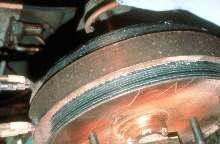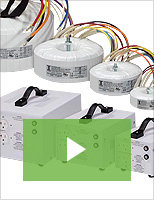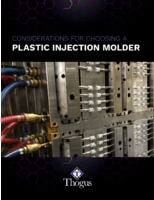
Flux-Cored Wire minimizes spatter and fumes.
Gas-shielded Tri-MarkÃ-® TM-910 is specifically designed for use with high argon shielding gas mixtures, such as 95% Argon/5% CO2 or 75% Argon/25% CO2, while maintaining deep penetration for general fabrication and shipyard welding applications. Optimized for all-position welding, wire maintains mechanical properties through high heat input/slow cooling rate applications and low heat...
Read More »Stick Electrodes come in 1 lb size for small jobs.
One-Pound Stick Electrode Tubes are color-coded by alloy type so users can identify correct consumable for project at hand. They are available for maintenance or repair applications on mild steel, aluminum, dissimilar metals, cast iron, general purpose stainless alloys, or for hardfacing worn parts.
Read More »Welding Wire suits all-position applications.
HobartÃ-® Excel Arc(TM) 71 tubular wire comes with AWS classification of E71T-1, E71T-9, E71T-1M, and E71T-9M. It suits all-position welding using shielding gas mixture of either 100% CO2 or 75% Argon/25% CO2. Gas shielded, flux cored carbon steel wire offers spray type transfer while reducing fumes and spatter on mild and low alloy steel applications. Wire is available in diameters ranging...
Read More »Tubular Wire has deoxidizers to optimize weld quality.
Formulation of FabCOÃ-® RXR, AWS E70T-1 allows operators to weld through rust, mill scale, and light oil without pre-cleaning. Gas shielded, flux cored, carbon steel wire exhibits smooth, stable arc and offers spray-type transfer. It produces smooth weld deposit with removable slag and is optimized for use in flat and horizontal welding positions using DCEP welding current. Wire operates with...
Read More »
WHAT TO LOOK FOR IN AN OPTICAL PARTNER
This white paper provides an overview into what to look for in an optical partner.
Read More »Metal-Cored Wire is suited for robotic MIG welding.
McKayÃ-® GOLDCORÃ-® 309LSi metal-cored gas-shielded stainless wire joins common austenitic stainless steels (309L alloys) or 300 series stainless steel to carbon or low alloy steels. Product's arc produces concave bead profile and allows for single- and multi-pass welding. Suited for vertical down (30Ã-
Read More »Aluminum MIG Wire comes in fully recyclable container.
SuperGlaze(TM) aluminum MIG wire, in 200 lb Accu-Pak(TM) box, is available in 3/64 in. dia for 5356 aluminum-alloy electrode type. When wire is used up, operator removes ring, cardboard core, and corner supports; collapses box, and places all in recycle bin. Accu-Trak(TM) precision wire delivery system provides twist-free wire placement in arc and eliminates wire flipping during feeding. Package...
Read More »
Welding Wire exhibits crack-resistance.
Suited for use in build up and overlay of under carriage components, Thermaclad 42 consists of sub arc wire that utilizes neutral flux. Alloy composition enables product to resist metal-to-metal frictional wear. It is available in 1/8 in. wire and can be packaged in 250 lb half packs or 500 lb drums.
Read More »
Nickel Wires allow out-of-position welds.
StoodyÃ-® 625, 182, 82, and A grades of flux cored nickel wires achieve welds in vertical-up position. Available in both .045 and 1/16 in. diameter, wires are packaged on 33 lb wire baskets. Welders can choose between running 75% argon, 25% CO2, or straight CO2.
Read More »Electrodes are suited for welding various alloys.
Blue MaxÃ-® stainless steel consumables can be used for welding high alloy, duplex, or super duplex stainless and nickel-based alloys. Products include Stick (SMAW), TIG (GTAW), MIG (GMAW), and Submerged Arc (SAW) consumables. Electrodes are lot-controlled with certificates of conformance available. Packaging options include hermetically-sealed Sahara-Packs(TM).
Read More »Welding Wires have lubricating surface treatment.
SuperArc copper-coated wire and SuperGlide MIG bare wire feature MicroGuard Ultra(TM) lubricating surface treatment, which reduces spatter and creates stable arc. Treatment improves feeding by reducing friction and guards against worn contact tips and liners, plugged drive roll grooves, and kinked wire guides. It also eliminates wavy appearance that can occur as wire bumps or lurches through gun...
Read More »
Ensure Your Medical Device Meets Regulatory Standards with Triad's Custom Magnetics
Triad Magnetics' custom components for medical devices are designed and manufactured with the strictest regulatory standards in mind. Our capabilities include rapid design, prototyping, and testing of inductors, transformers, and power supplies for medical equipment. Check out our video to learn more.
Read More »



